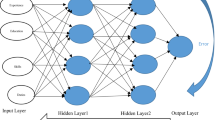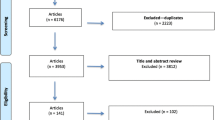Abstract
Based on a large survey of German companies, we investigate the influence of job characteristics on the recruiting success on labor markets with different degrees of informational asymmetry. We cluster companies’ recruiting channels in those with low (internal job markets and employee referrals) and high (job advertisements, the Federal Employment Agency and headhunters) degrees of informational asymmetry. We provide evidence that monetary aspects are important when quality aspects of the job and the company are not directly observable by job applicants. However, if recruiting channels are used where the level of asymmetric information is lower because applicants have more reliable information about job and company characteristics, the quality attributes of a workplace, such as flexible work times or a high job responsibility, become influential on the recruiting success. Finally, our results show that applicants with access to more information about the quality aspects of a job also seem to be in a better position to evaluate the information given with regard to their credibility.

Similar content being viewed by others
Notes
These findings are confirmed, when we run an OLS regression on the staffing rate for the whole sample and include interaction terms between the job characteristics and a dummy variable for recruiting channels with high and low informational asymmetry. Moreover, we obtain largely the same results when we include interaction terms with dummy variables for each recruiting channel. Further details on the robustness checks can be found in Sect. 5.
The results stay the same when we run the Heckman selection estimation with the variable for difficulties to fill job openings as dependent variable.
References
Akerlof GA (1970) The market for “Lemons”: quality uncertainty and the market mechanism. Quart J Econ 84(3):488–500
Allen DG, Van Scotter JR, Otondo RF (2004) Recruitment communication media: impact on prehire outcomes. Pers Psychol 57(1):143–171
Antoninis M (2006) The wage effects from the use of personal contacts as hiring channels. J Econ Behav Organ 59(1):133–146
Backes-Gellner U, Tuor SN (2010) Avoiding labor shortages by employer signaling: on the importance of good work climate and labor relations. Ind Labor Relat Rev 63(2):271–286
Baltes BB, Briggs TE, Huff JW, Wright JA, Neuman GA (1999) Flexible and compressed workweek schedules: a meta-analysis of their effects on work-related criteria. J Appl Psychol 84(4):496–513
Barber AE, Roehling MV (1993) Job postings and the decision to interview: a verbal protocol analysis. J Appl Psychol 78(5):845–856
Bretz Jr RD , Judge TA (1994) The role of human resource systems in job applicant decision processes. J Manag 20(3):531–551
Burdett K, Cunningham EJ (1998) Toward a theory of vacancies. J Labor Econ 16(3):445–478
Chapman DS, Uggerslev KL, Carroll SL, Piasentin KA, Jones DA (2005) Applicant attraction to organizations and job choice: a meta- analytic review of the correlates of recruiting outcomes. J Appl Psychol 90(5):928–944
Connelly BL, Certo ST, Ireland RD, Reutzel CR (2011) Signaling theory: a review and assessment. J Manag 37(1):39–67
Fahr R (2011) Job design and job satisfaction—empirical evidence for Germany? Management revue. Int Rev Manag Stud 22(1):28–46
Gude H, Kay R, Suprinovič O, Werner A (2010) Deckung des Fach- und Führungskräftebedarfs in kleinen und mittleren Unternehmen. KfW, Creditreform, IfM Bonn, RWI, ZEW in: MittelstandsMonitor 2010—Jährlicher Bericht zu Konjunktur- und Strukturfragen kleiner und mittlerer Unternehmen, Frankfurt am Main, pp 109–145
Heckman JJ (1979) Sample selection bias as a specification error. Econometrica 47(1):153–161
Holzer HJ (1994) Job vacancy rates in the firm: an empirical analysis. Economica 61(241):17–36
Kay R, Suprinovič O, Werner A (2010) Deckung des Fachkräftebedarfs in kleinen und mittleren Unternehmen: Situationsanalysen und Handlungs-empfehlungen. Institut für Mittelstandsforschung Bonn: IfM-Materialien Nr. 200
Kirmani A (1990) The effects of perceived advertising costs on brand perceptions. J Consum Res 17(2):160–171
Kirnan JP, Farley JA, Geisinger KF (1989) The relationship between recruiting source, applicant quality, and hire performance: an analysis by sex, ethnicity, and age. Pers Psychol 42(2):293–308
Kohn LS, Dipboye RL (1998) The effects of interview structure on recruiting outcomes. J Appl Soc Psychol 28(9):821–843
Milgrom P, Roberts J (1986) Price and advertising signals of product quality. J Polit Econ 94(4):796–821
Nadler JT, Cundiff NL, Lowery MR, Jackson S (2010) Perceptions of organizational attractiveness: the differential relationships of various work schedule flexibility programs. Manag Res Rev 33(9):865–876
Nelson P (1974) Advertising as information. J Polit Econ 82(4):729–754
Ployhart RE (2006) Staffing in the 21st century: new challenges and strategic opportunities. J Manag 32(6):868–897
Powell GN (1984) Effects of job attributes and recruiting practices on applicant decisions: a comparison. Pers Psychol 37(4):721–732
Rau BL, Hyland MM (2002) Role conflict and flexible work arrangements: the effects on applicant attraction. Pers Psychol 55(1):111–136
Russo G, Rietveld P, Nijkamp P, Gorter C (2000) Recruitment channel use and applicant arrival: an empirical analysis. Empir Economics 25(4):673–697
Rynes SL, Bretz RD Jr, Barry G (1991) The importance of recruitment in job choice: a different way of looking. Pers Psychol 44(3):487–521
Saks AM, Uggerslev KL (2010) Sequential and combined effects of recruitment information on applicant reactions. J Bus Psychol 25(3):351–365
Schmidtke C (2002) Signaling im personalmarketing. Eine theoretische und empirische Analyse des betrieblichen Rekrutierungserfolges. Munich. Rainer Hampp, Verlag
Sebald H, Denison K, Enneking A, Richter T (2007) Was Mitarbeiter bewegt zum Unternehmenserfolg beizutragen—Mythos und Realität. Towers Perrin Global Workforce Study
Spence M (1973) Job market signaling. Quart J Econ 87(3):355–374
Turban DB, Dougherty TW (1992) Influences of campus recruiting on applicant attraction to firms. Acad Manag J 35(4):739–765
van Hoye G, Lievens F (2005) Recruitment-related information sources and organizational attractiveness: can something be done about negative publicity? Int J Sel Assess 13(3):179–187
Wooldridge JM (2008) Introductory econometrics. A modern approach. South-Western Cengage learning, Mason
Yip PSL, Tsang EWK (2007) Interpreting dummy variables and their interaction effects in strategy research. Strateg Organ 5(1):13–30
Acknowledgments
We thank Creditreform e.V. and the Institute for SME Research Bonn (IfM Bonn), which made the data accessible to us.
Author information
Authors and Affiliations
Corresponding author
Appendix
Appendix
See Table 2, 3, 4, 5, 6 and Fig. 2
Rights and permissions
About this article
Cite this article
Falk, S., Hammermann, A., Mohnen, A. et al. Different degrees of informational asymmetry on job markets and its impact on companies’ recruiting success. J Bus Econ 83, 295–317 (2013). https://doi.org/10.1007/s11573-013-0654-8
Published:
Issue Date:
DOI: https://doi.org/10.1007/s11573-013-0654-8





